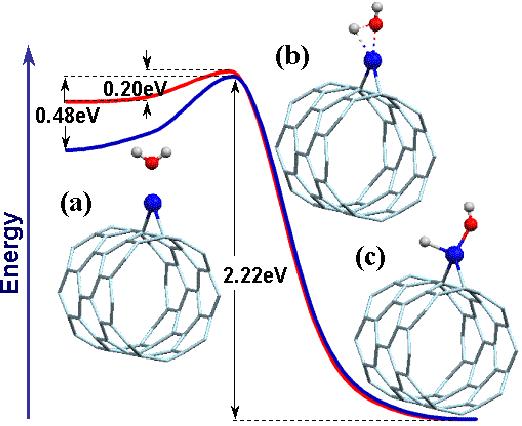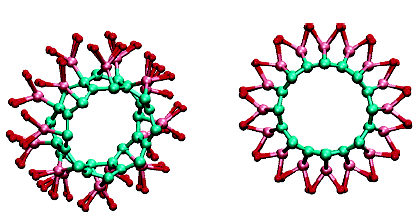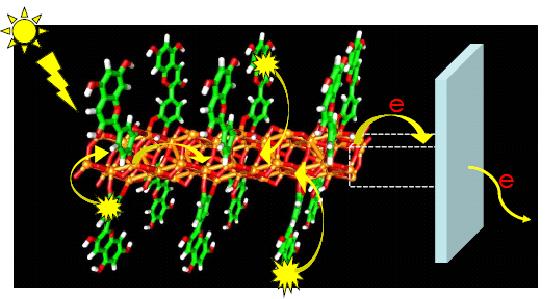新能源器件物理 Energy Conversion
We are facing great energy challenges today. CO2-exacerbated global warming, vehicle-related air pollution, and rapid depletion of fossil fuels have led to a global drive for developing alternative and clean energy resources.

A promising solution is to use hydrogen as a new energy carrier, particularly if it can be produced from renewable sources with zero CO2 emission. Nevertheless, current dominant methods of producing hydrogen on an industrial scale are via reforming hydrocarbons or refining petroleum, both of which still release CO2, and neither is renewable. Direct splitting of water to generate H2 and O2 is difficult, but it is solved in biology with a high efficiency (30-60%) through photosynthesis after millions years of evolution. Carefully design of biomimetic catalysts perhaps will help us to go even higher for producing fuels from water (JACS128, 9282). Recently we proposed carbon nanotube functioned by a single Ti-adsorbate could reduce water splitting barrier to less than 0.5 eV, favoring low-temperature processing; a H2 molecule is formed upon a second water adsorption and readily released.

Toward a hydrogen-based economy, hydrogen storage also meets great challenges because it has to satisfy several severe requirements, such as low cost, high density, and safety. Traditional methods to store hydrogen include using compressed gaseous or liquid H2, which needs risky high pressure and/or low temperature; or using solids that adsorb H2. Various systems are proposed, such as metal hydrides, carbon nanostructures, and porous materials; unfortunately, they either have low H2 density or do no exhibit reversibility at room temperature. Recently we proposed that TiB2 nanotubes have high storage capacity (5.5%), desired H2 binding strength (0.2-0.6eV), and no metal clustering, rendering it perfect for near ambient H2 storage (Nano Lett. 7,663).
Currently, we are also working on improving solar-cell efficiency based on cheap semiconductor (TiO2) nanowires sensitized by natural dyes. Our results indicate that this system has largely enhanced visible-light absorption, ultrafast electron injection and transport, and is easy to be assembled into large-scale antenna systems. All makes it promising for artificial photo-synthesis that imitates plant leaves.

